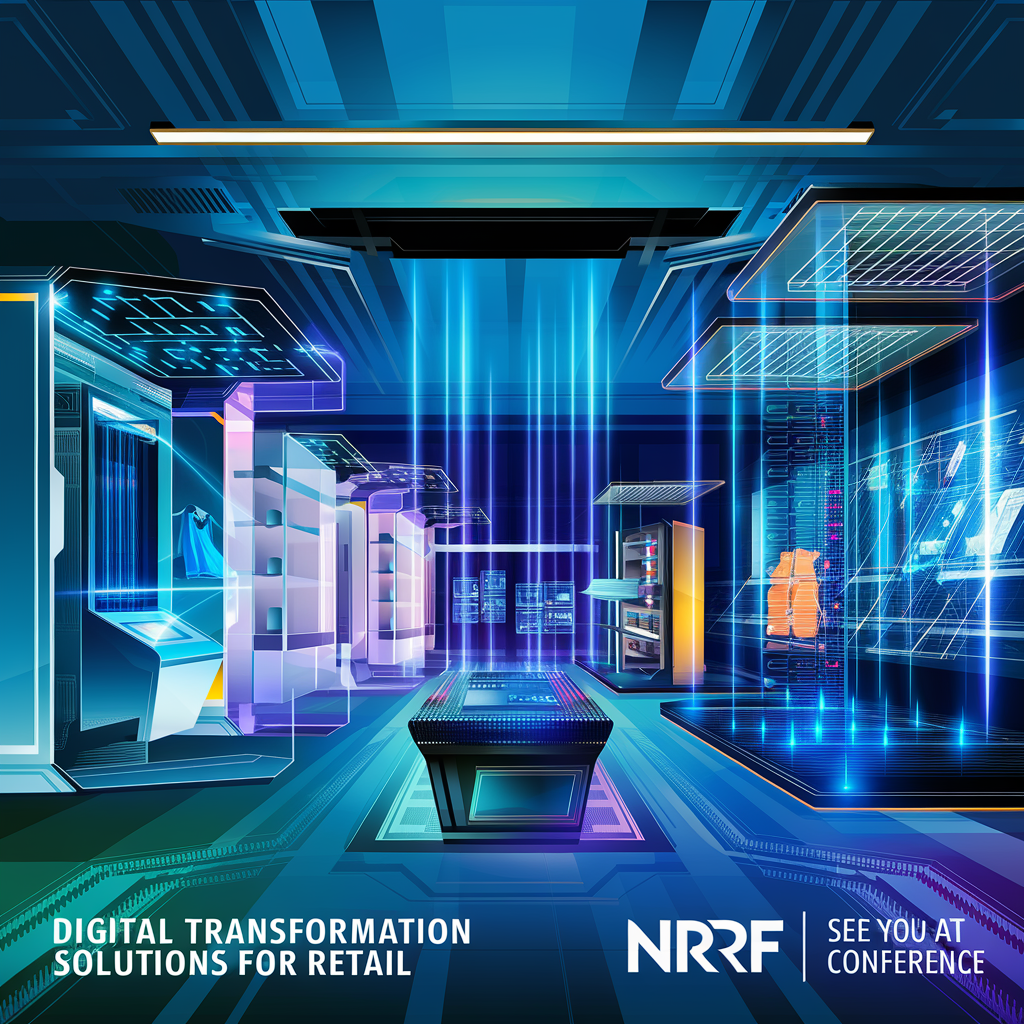Humanoid AI response generators and Multimodal Agents are paving the way for transformation in digital commerce. Online transactions are increasingly becoming a hyper-personalized, seamless, and well-informed experience. According to statistics by Sellers Commerce, 24% of US consumers are regular users of chatbots while they are shopping online. Coincidentally, 45% of respondents trust chatbots when it comes to obtaining immediate answers to their questions. However, definitive assistance in product discovery is still a challenge.
Retailers can automate AI shopping assistants to function like an eCommerce virtual assistant for its consumers. The AI shopping assistant performs all the tasks one would expect from a virtual personal shopper- helping customers discover relevant products, offering hyper-personalized recommendations tailored to customer needs, and anticipating consumer needs on the basis of browsing history, shopping behavior, preferences, etc
What is generative AI and how does it work?
Generative AI is promising both brands and consumers an entirely new level of convenience- from the anticipation of consumer demands to curating products based on personal tastes and preferences. At its foundation, generative AI is a form of artificial intelligence that is trained to generate content by recognizing patterns in existing data. While traditional AI focuses on analyzing and automating content, generative AI helps produce new content.
So, how does generative AI apply to retail? Retailers are constantly on the lookout for creating stand-out experiences that help consumers identify their brand in a saturated and competitive market. Predictive AI has been at the helm of eCommerce innovation for some time now, starting with product recommendations to intelligent search results. However, now generative AI has the potential to redefine the eCommerce game by revolutionizing sales
Why is there so much buzz around humanoid AI assistants use in the retail industry
For the uninitiated, ‘eCommerce virtual assistants’ might just be another buzzword. However, this emerging technology is redefining the buyer experience to benefit both retailers and consumers. There are several reasons why there is so much buzz around the use of humanoid AI assistants in the retail industry.
Hyper-personalization
The modern consumer wants to feel like the brands “get” them. Generative AI allows retailers to analyze a wide range of data to create ultra-personalized product recommendations, designs, and even marketing strategies tailored to consumer preferences.
Faster time-to-market
Thanks to generative AI, products can be stocked both virtually and physically faster than traditional approaches. Generative AI can be employed in prototype design, optimization of supply chains, and in making adjustments to the inventory at break-neck speeds.
Operational streamlining
Generative AI can allow retailers to automate tasks that used to take an entire team of employees to conduct. Generative AI gives retailers tools to enhance everything from customer experience to backend logistics. Be it handling customer enquiries to automated product descriptions, the possibilities are limitless.
What are the best use cases for humanoid AI assistants in retail
For retailers:
1. Improved customer engagement
Retail brands can use generative AI to create chatbots and virtual eCommerce assistants that interact with customers by offering data-driven insights that help enhance the buyer’s journey. Humanoid AI assistants can help brands become more customer-centric.
2. Cross-selling and upselling through self-service
A virtual assistant can offer customers suggestions that lead to cross-selling and upselling through self-service. AI assistants are available to aid your customers by analyzing their data, such as their previous purchases, browsing history, and preferences.
3. Cost and Time Savings
AI assistants are available to aid customers 24/7, offering immediate assistance without any necessity for human interaction. Virtual eCommerce assistants can guide customers to buy without relying on human assistance to make an informed decision.
4. Streamlined buying process
Generative AI can help streamline the buying process with dynamic product suggestions that match the customers expectations. This enhances personalization, optimises customer interactions, and automates various aspects of the sales process, thereby boosting retention and conversion.
For customers:
1. Personalized recommendations and product discovery
Businesses can train AI assistants to offer customers personalized recommendations by collecting data from their purchase history, browsing behavior, demographic data, consumer feedback and ratings, etc. AI can help with product categorization and similarity matching through content-based as well as collaborative filtering.
2. Convenient shopping
Businesses can appoint virtual assistants to offer customers a convenient shopping experience by streamlining the purchasing process and personalizing interactions to meet individual preferences. Easy personalized product suggestions and searching can boost one-click shopping.
3. 24/7 availability
Unlike traditional sales assistants an AI assistant is available 24/7 around the clock, meaning customers can get help whenever they need it, regardless of time zone or business hours. Immediate assistance means customer satisfaction in the brand as AI can handle enquiries, manage orders, and troubleshoot issues for consumers.
4. Responsive customer service
AI virtual assistants can offer responsive customer service by providing quick accurate and contextually-relevant support. These assistants can leverage emerging technologies like Natural Language Processing, machine learning, and data analytics to engage with customers and resolve their issues effectively.
What are the steps for implementing humanoid AI assistants in retail
Incorporating generative AI shopping assistants into your eCommerce is not rocket science. However, brands must follow a well-drafted plan if they wish to get the most out of these AI bots and use them to generate leads. At KiXR, we have a streamlined process for implementing bespoke eCommerce virtual assistants for our client brands.
1. Identifying the right solution
The primary step in adopting humanoid AI assistants for your business is to identify one which aligns with your business needs. One must take into account factors such as customization options, the ability to scale to handle specific customer queries, and product range.
2. Seamless integration
The second factor to take into consideration is how well the AI integrates seamlessly with your eCommerce platform and CRM systems. Businesses must stress seamless integration if they wish to maintain a consistent and dedicated customer experience.
3. Training AI with quality data
To innovate customer-facing services, businesses must feed their AI bot with high-quality data. Accuracy and comprehension are of key importance if you want your business AI to understand customer preferences and browsing patterns to generate intelligent personalized recommendations.
4. Post-deployment monitoring and optimization
Post-deployment monitoring and optimization is essential for the performance of your eCommerce AI assistant. Customer feedback and analytics are your best sources to refine responses and suggestions, thereby maintaining relevancy and practicality.
What are the challenges that retailers may face in using Generative AI for retail
1. Bias in AI models
Generative AI models rely heavily on extensive volumes of data to generate responses for customer queries. AI models can preserve and amplify the biases propagated by the data it is trained on, resulting in unfair or discriminatory outcomes. Businesses must do everything in their scope to ensure these data volumes are bias-free to the fullest extent.
2. Data privacy and security
Businesses face obstacles when it comes to the privacy and security aspect of data for AI training. In the times we live in, data breaches have become very common. Businesses have to be wary of the security risks involved with third-party AI model adoption. Maintaining data hygiene prevents the leakage of sensitive customer data which can lead to financial and brand value loss.
3. Data quality and quantity
Data quality and quantity is another challenge for generative AI models which rely extensively on volumes of top-notch data to generate accurate and impactful outcomes. Incomplete or inaccurate data can lead to AI responding with biased and erroneous results. Businesses can avoid legal liability issues to a great extent by ensuring sanctity of data.
4. Data security and privacy
Generative AI response generators handle large volumes of sensitive and personal data which is vulnerable to leaks if the AI model is not trained properly on data security. Your business must employ measures for the security and confidentiality of data on which your AI models are trained. This goes a long way to foster brand trust and loyalty among customers.
5. Generative AI vs. IP rights
Generative AI models are rigorously tested to identify and replicate patterns in data so the products thus created cannot be copyrighted. Businesses must understand that there are legal ramifications associated with using protected content to train generative AI models. Businesses must only train their AI bots on licensed data to prevent legal hardships.
AI is far from a trend; it is an evolving part of the future of eCommerce. At KiXR, we dedicate our knowledge in artificial intelligence and machine learning to identify the toughest of challenges faced by brands who need cutting edge humanoid assistants for their business processes. By combining human intelligence with the force multiplier of AI we can create bespoke solutions for your retail brand. Contact us here to learn more.
Frequently asked questions
1. What are the key trends in digital transformation in 2024?
The key trends in digital transformation in 2024 are generative AI and automation, data privacy and security, cloud-native architectures, adopting microservices, and serverless architectures. 5G integration has also become the basis for IoT integration and edge-computing. AI-driven customer experiences and blockchain integration is also spearheading digital transformation in 2024.
2. What is an eCommerce virtual assistant?
An eCommerce virtual assistant is a digital tool that helps businesses streamline their online store operations. eCommerce virtual assistants are AI-powered software that can manage tasks such as customer inquiries, product recommendations, order management, inventory updates, and enhance efficiency and customer experience.
3. How does Generative AI answer customer queries?
Generative AI can respond to customer queries with the assistance of its natural language processing modules to understand questions and generate responses that are contextually accurate. Generative AI can provide instant, personalized support in response to FAQs, troubleshoot issues, suggest products, and handle complex queries that enrich user experience.
4. Why use humanized AI for customer success?
If your business brand wishes to be more empathetic and engaging customer experience then you can rely on humanized AI for customer success. AI mimics human interaction, personalizes support, resolves challenges at the drop of a hat among other advantages. This approach helps generate loyalty, enhances satisfaction, and bridges gaps between automation and real-time CRM.


